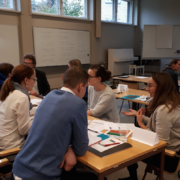Collaborative practices for environmental decision-making
Challenges pertaining to the environment and natural resources governance are becoming more and more complex. Finding solutions calls for networking between different actors, collaboration, increasingly efficient sharing of information, and methods for conflict resolution.
“We want to take Finnish environmental decision-making to a new era and to introduce a new turn that is characterised by collaboration,” Professor Lasse Peltonen says.
He is the leader of the CORE project seeking to introduce collaborative practices to Finnish environmental decision-making. The project is funded by the Strategic Research Council of the Academy of Finland.
The CORE project seeks to find collaborative responses to decision-making and environmental challenges that can’t be solved by any single actor alone. According to Peltonen, there are many challenges in regional and environmental planning in Finland that require new practices to bring stakeholders around the same table to find solutions.
Next autumn, training on collaborative practices will be offered to Finnish officials who are involved in environmental decision-making. The course instructors will come from Oregon, where collaborative practices are widely used.
“At the same time, we are also building a ‘community of practice’ of authorities whose work involves integrating conflicting views of different parties. We start from cases they are dealing with in their work, and our research seeks to analyse the challenges and needs they encounter.”
The themes of the CORE project are closely linked to the major reform ongoing in our society: Traditional political institutions and forms of public participation are losing their importance, as new forms of civic activity gain more footing. However, this change isn’t recognised in administrative and decision-making practices yet.
“Current models of decision-making and planning are largely based on the idea of a single organisation doing all the planning and decision-making, while the role of stakeholders is merely to review and comment. We’d like to introduce a model that better recognises the role of key stakeholders and civic society actors in collaboration and in the implementation of the decisions made,” Peltonen concludes.
Read the whole article at the University of Eastern Finland website.





Leave a Reply
Want to join the discussion?Feel free to contribute!